How to build mobile apps on Google Cloud Platform
Syne Mitchell
Technical Writer, Google Cloud Platform
At some point in development, nearly every mobile app needs a backend service. With Google’s services you can rapidly build backend services that:
- Scale automatically to meet demand
- Automatically synchronize data across devices
- Handle the offline case gracefully
- Send notifications and messages
The following are design patterns you’ll find in Build mobile apps using Google Cloud Platform, which provides a side-by-side comparison of Google services, as well as links to tutorials and sample code. Click on a diagram for more information and links to sample code.
Real-time data synchronization with Firebase
Firebase is a fully managed platform for building iOS, Android and web apps that provides automatic data synchronization and authentication services.To understand how using Firebase can simplify app development, consider a chat app. By storing the data in Firebase, you get the benefits of automatic synchronization of data across devices, minimal on-device storage, and an authentication service. All without having to write a backend service.
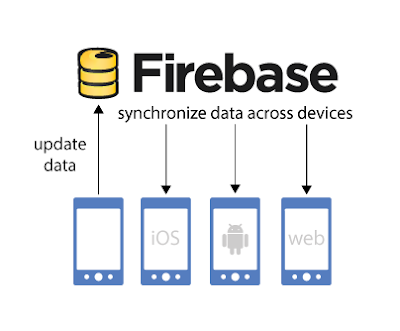

Add managed computation to Firebase apps with Google App Engine
If your app needs backend computation to process user data or orchestrate events, extending Firebase with App Engine gives you the benefit of automatic real-time data synchronization and an application platform that monitors, updates and scales the hosting environment.An example of how you can use Firebase with App Engine is an app that implements a to-do list. Using Firebase to store the data ensures that the list is updated across devices. Connecting to your Firebase data from a backend service running on App Engine gives you the ability to process or act on that data. In the case of the to-do app, to send daily reminder emails.
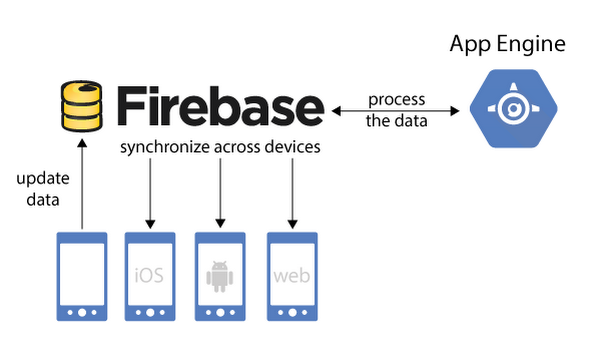

Add flexible computation to Firebase with App Engine Managed VMs
If your mobile backend service needs to call native binaries, write to the file systems and make other system calls, extending Firebase with App Engine Managed VMs gives you the benefit of automatic real-time data synchronization and an application platform, with the flexibility to run code outside of the standard App Engine runtime.Using Firebase and App Engine Managed VMs is similar to using Firebase with App Engine and adds additional options. For example, consider an app that converts chat messages into haikus using a pre-existing native binary. You can use Firebase to store and synchronize the data and connect to that data from a backend service running on App Engine Managed VMs. Your backend service can then detect new messages, call the native binaries to translate them into poetry, and push the new versions back to Firebase.
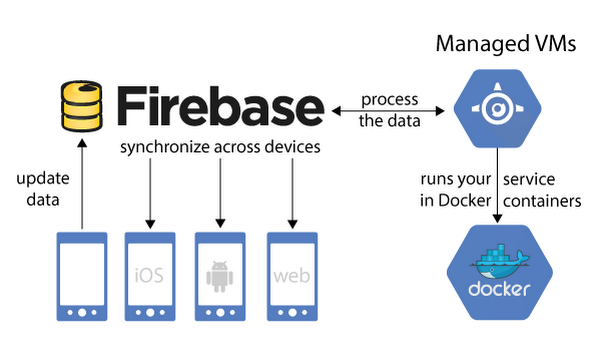

Automatically generate client libraries with App Engine and Google Cloud Endpoints
Using Cloud Endpoints means you don’t have to write wrappers to handle communication with App Engine. With the client libraries generated by Cloud Endpoints, you can simply make direct API calls from your mobile app.If you're building an app that does not require real-time data synchronization, or if messaging and synchronization are already part of your backend service, using App Engine with Cloud Endpoints speeds development time by automatically generating client libraries. An example of an app where real-time synchronization is not needed is one that looks up information about retail products and finds nearby store locations.
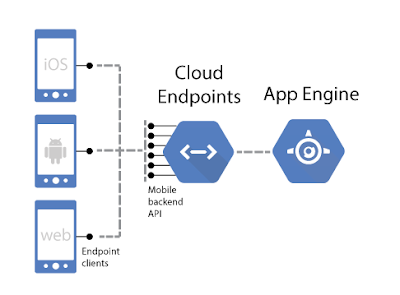

Have full control with Compute Engine and REST or gRPC
With Google Compute Engine, you create and run virtual machines on Google infrastructure. You have administrator rights to the server and full control over its configuration.If you have an existing backend service running on a physical or virtual machine, and that service requires a custom server configuration, moving your service to Compute Engine is the fastest way to get your code running on Cloud Platform. Keep in mind that you will be responsible for maintaining and updating your virtual machine.
An example of an app you might run on Compute Engine is an app with a backend service that uses third-party libraries and a custom server configuration.
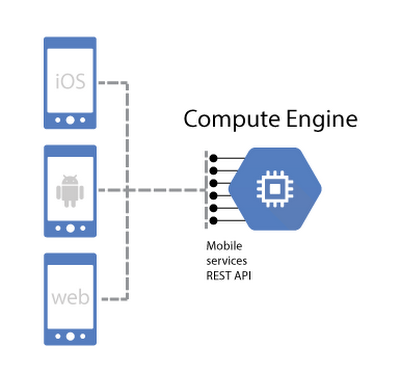

For more information about these designs, as well as information about building your service, testing and monitoring your service and connecting to your service from your mobile app — including sending push notifications — see How to build backend services for mobile apps.


